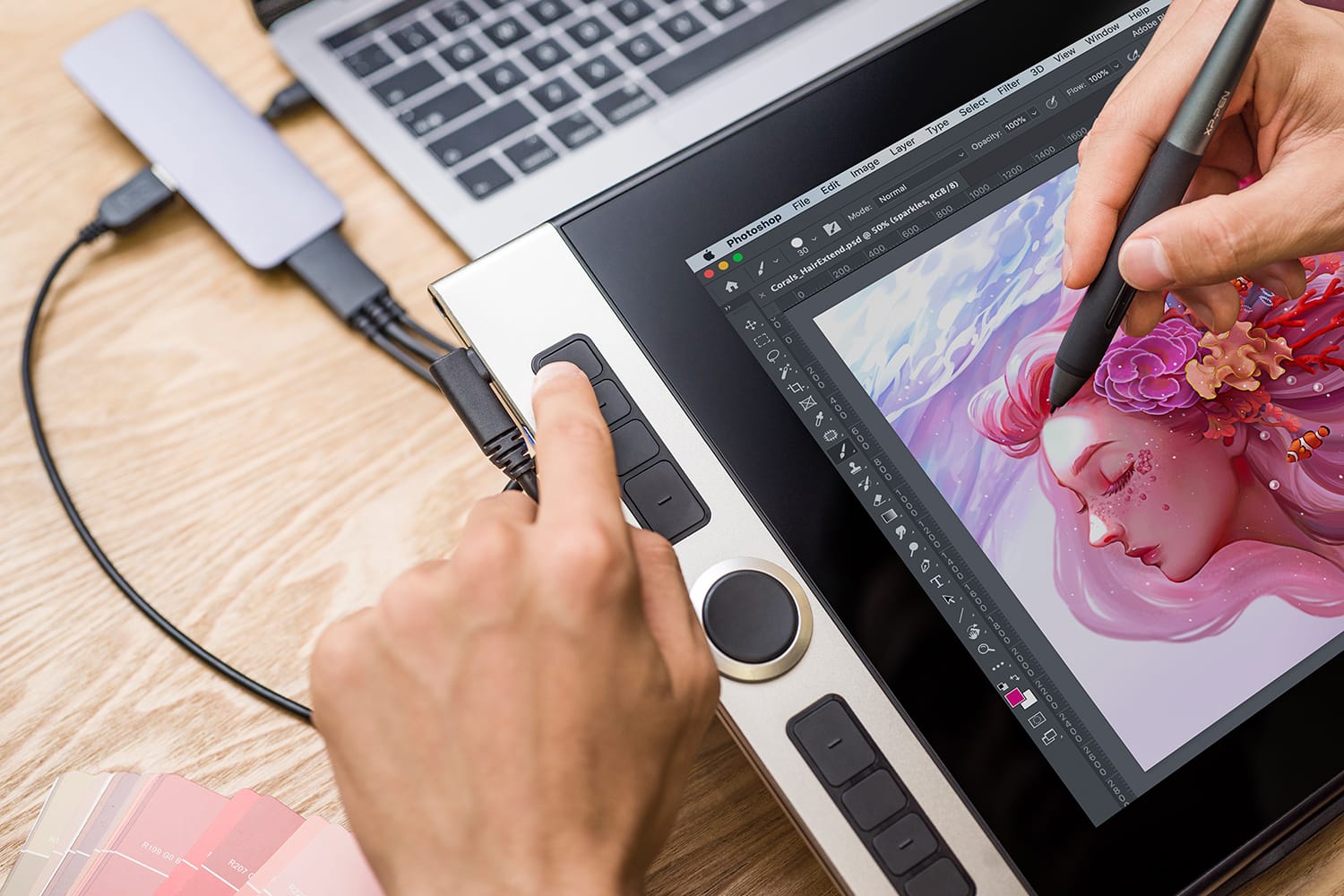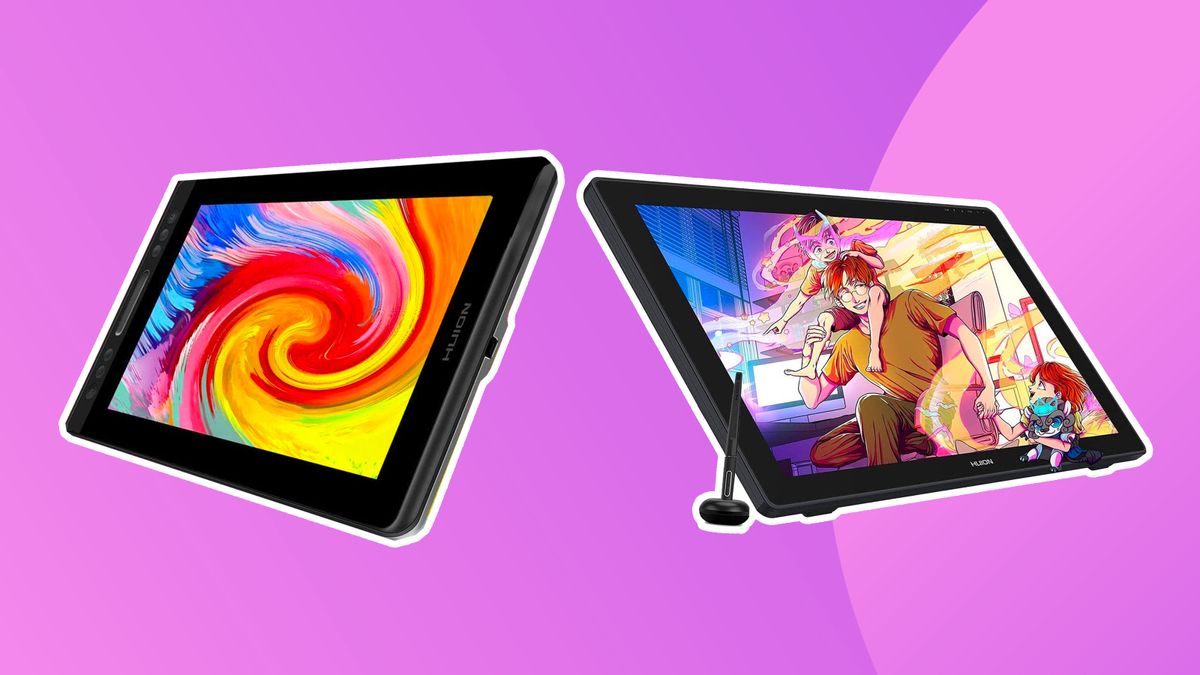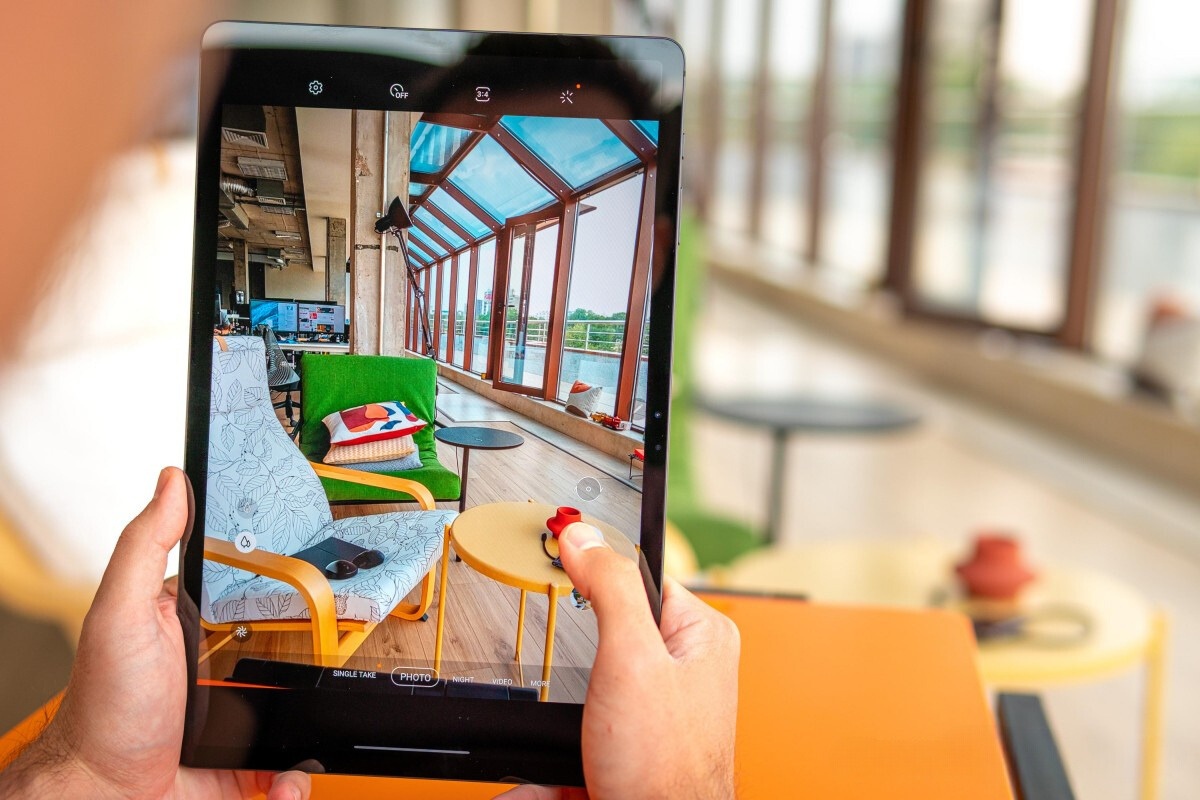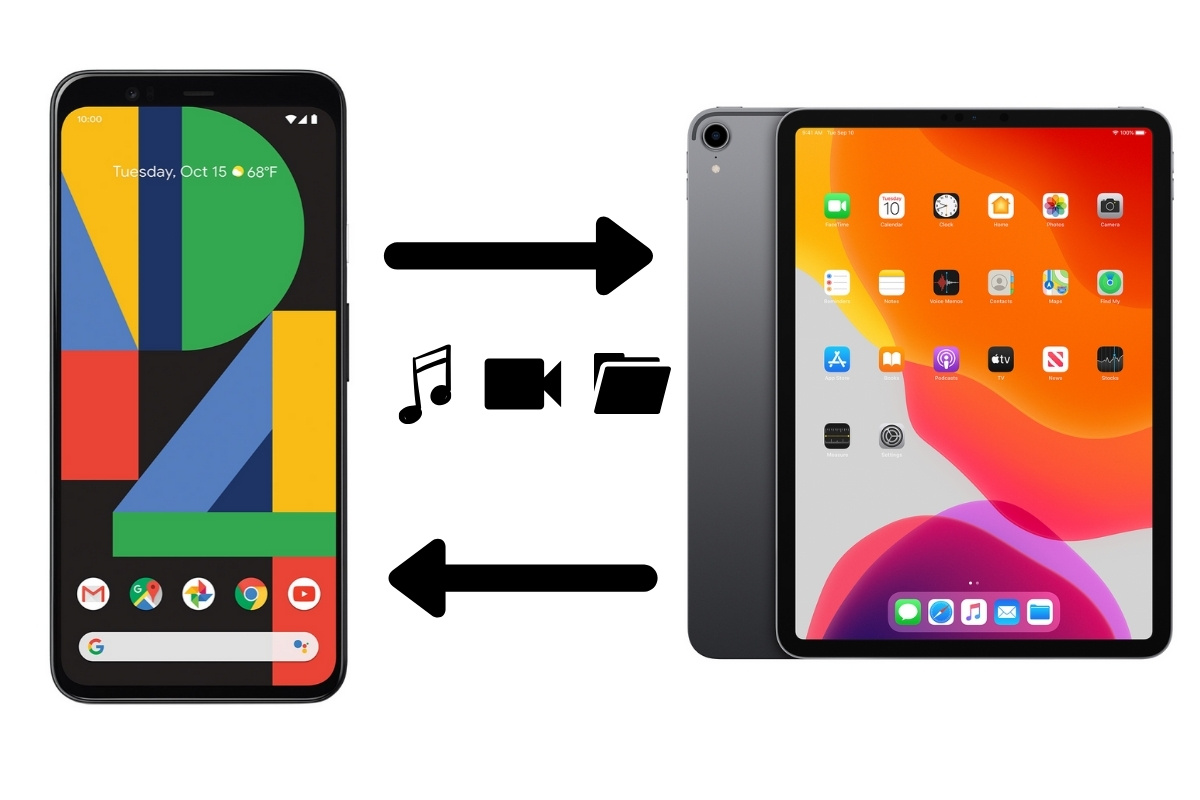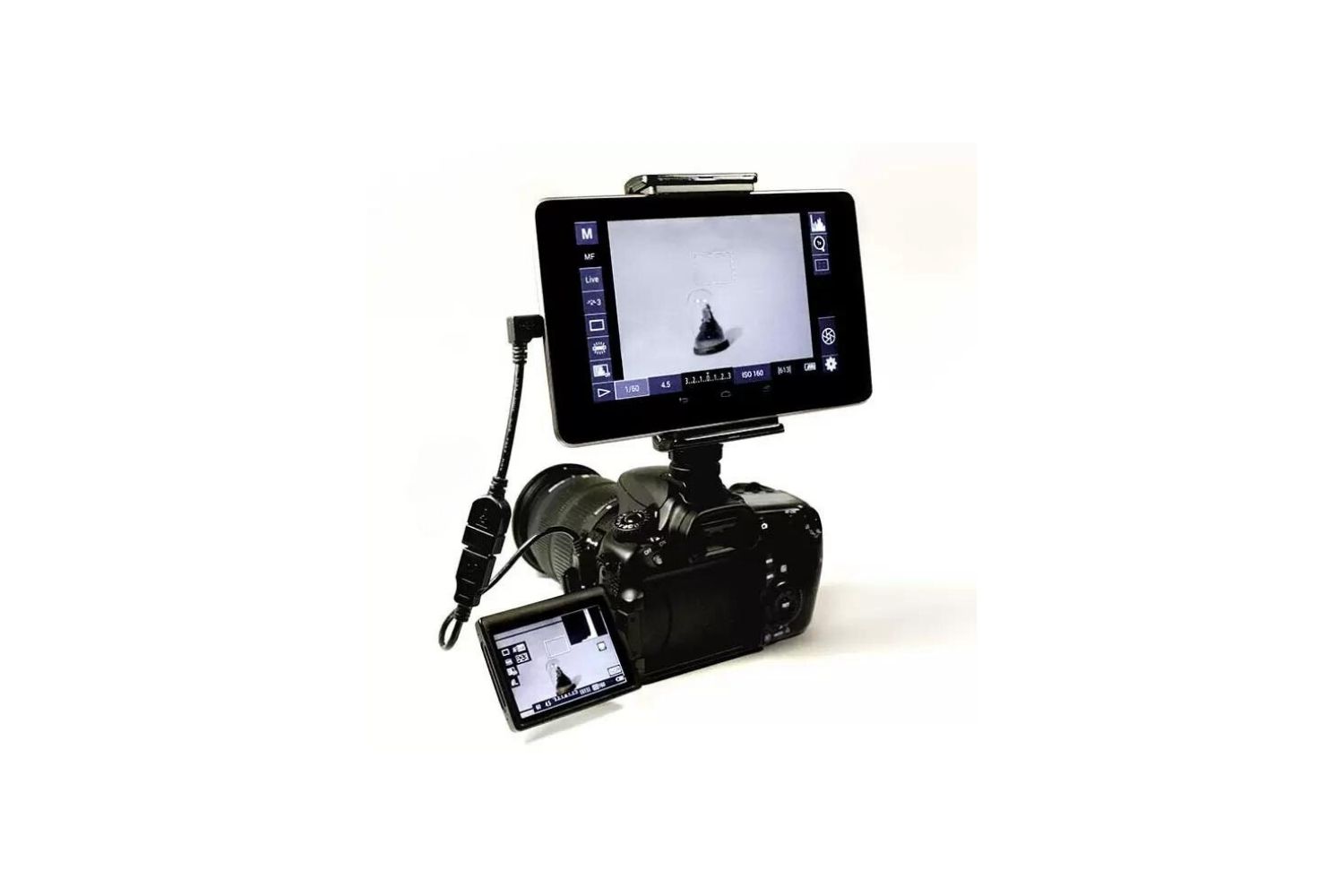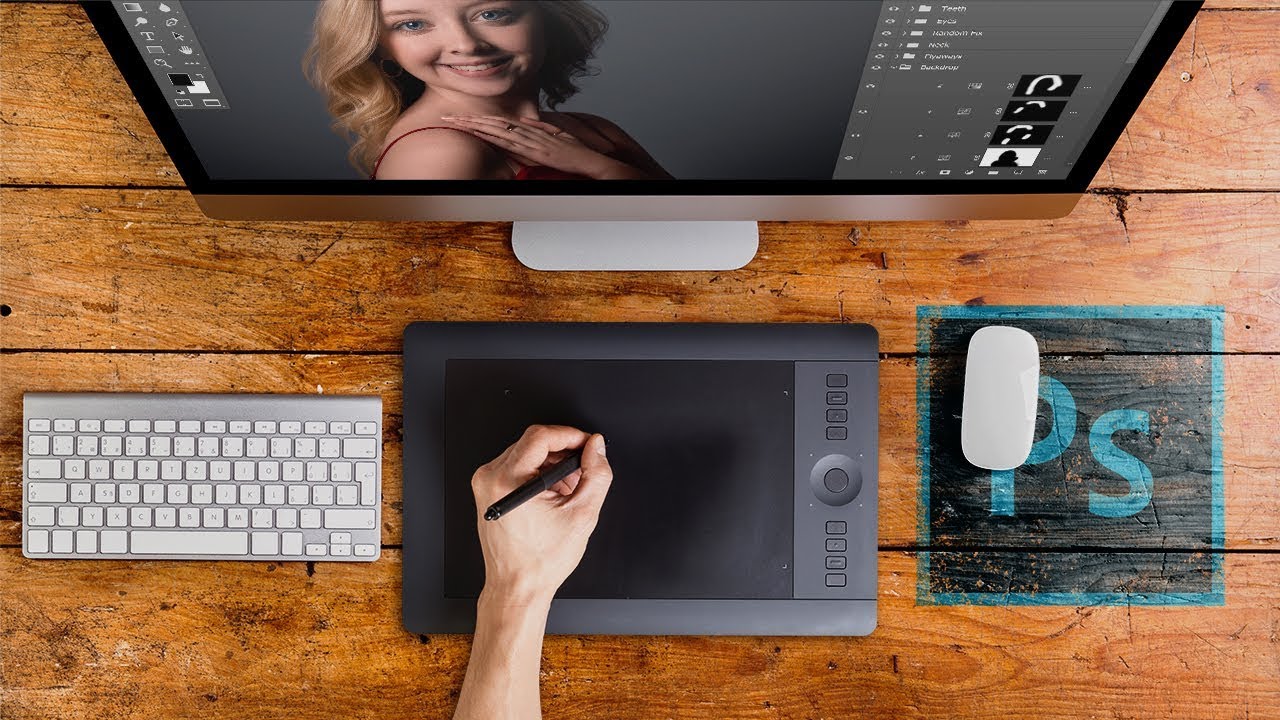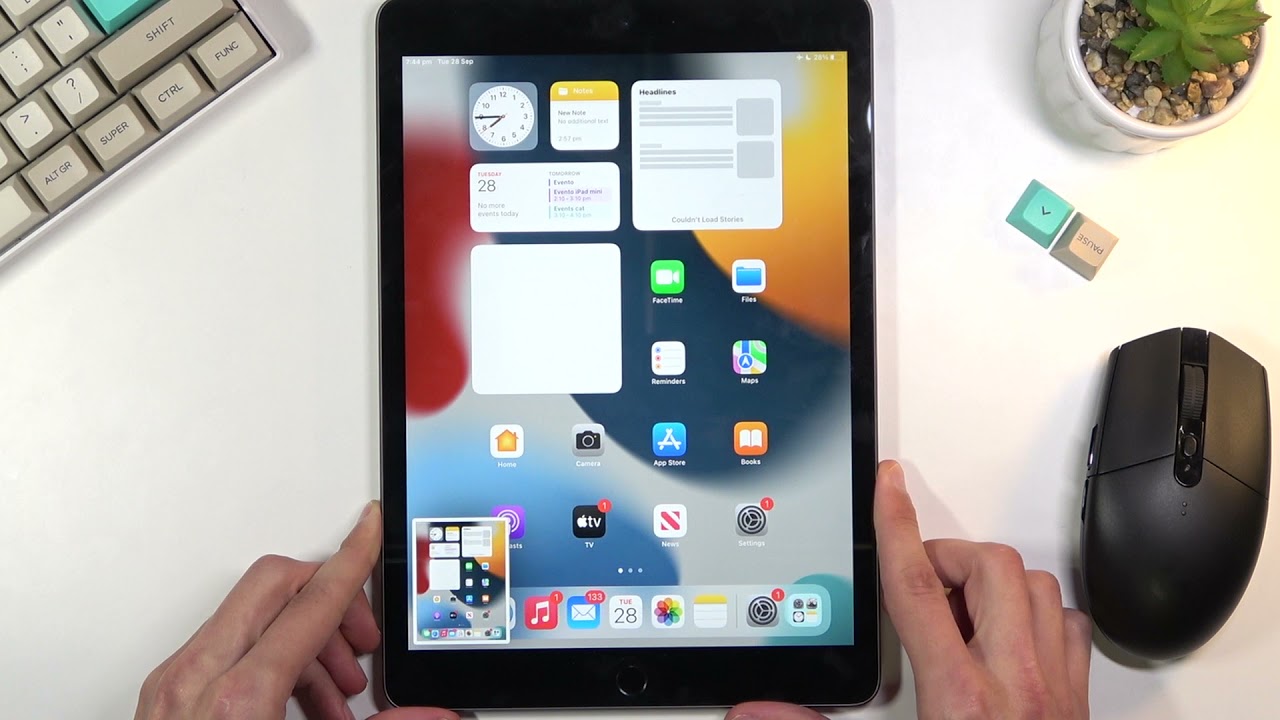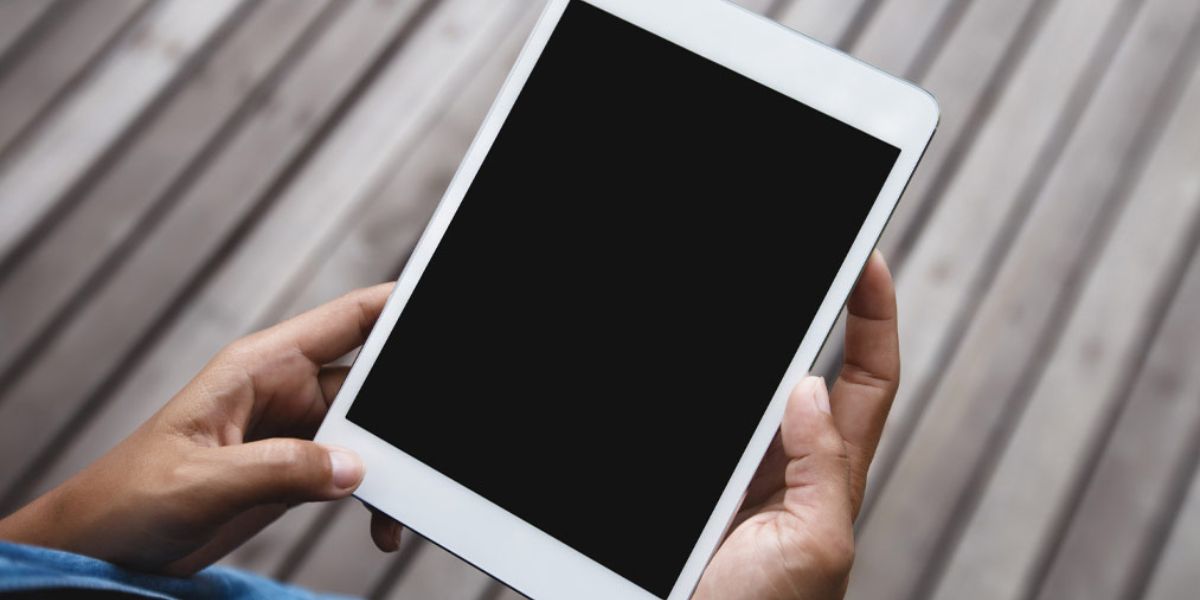Introduction
When it comes to photo editing, having the right tools is crucial in ensuring accurate color reproduction, precise image adjustments, and an overall seamless editing experience. While desktop computers have long been the go-to choice for professional photo editing, tablets have gained significant popularity in recent years due to their portability and versatility.
In this article, we will explore the best tablets for photo editing and discuss their key features and considerations. Whether you are a professional photographer looking for a portable editing solution or an enthusiast who wants to enhance your photos on-the-go, finding the right tablet can significantly improve your editing workflow.
When choosing a tablet for photo editing, several factors need to be considered. Display size and resolution, color accuracy and gamut, processing power and RAM, storage capacity, operating system and app availability, pen support and sensitivity, connectivity options, battery life, and price range are all crucial aspects to look into. By understanding the importance of these features and how they impact the photo editing process, you can make an informed decision when selecting the best tablet for your needs.
So, if you’re ready to embark on the journey of finding the ideal tablet for photo editing, let’s dive into the world of cutting-edge technology and discover the options available to bring your images to life.
Display Size and Resolution
The display size and resolution of a tablet play a crucial role in photo editing as they directly impact the viewing experience and the ability to work with fine details. Larger display sizes provide more screen real estate, allowing you to have a better overview of your images and easily navigate through intricate editing tools.
When it comes to resolution, a higher pixel density ensures sharper and more detailed visuals. This is especially important when you need to make precise adjustments to your photos, such as retouching small imperfections or enhancing intricate elements.
For professional photo editing, tablets with a display size of around 10 to 13 inches are often preferred. This provides a balance between portability and screen real estate. Popular options in this size range include the Apple iPad Pro 12.9, Samsung Galaxy Tab S7+, and Microsoft Surface Pro X.
In terms of resolution, tablets with a minimum of 2560 x 1600 pixels offer a good level of clarity and detail. However, if you require even higher resolution, models like the Apple iPad Pro 12.9 with its stunning Liquid Retina XDR display boasting a resolution of 2732 x 2048 pixels or the Samsung Galaxy Tab S7+ with its Super AMOLED screen and resolution of 2800 x 1752 pixels are excellent choices.
Remember, the display size and resolution are not the only important factors; the quality of the panel itself should also be considered. Look for tablets with IPS or AMOLED displays, as they offer vibrant colors, wide viewing angles, and excellent contrast, ensuring accurate color representation during the photo editing process.
Ultimately, the ideal display size and resolution for photo editing depend on your personal preferences, the level of detail in your editing tasks, and the portability you require. Consider your specific needs and choose a tablet with a display that allows you to comfortably work on your photos with precision and clarity.
Color Accuracy and Gamut
Color accuracy and gamut are critical factors to consider when selecting a tablet for photo editing. As a photographer, you want to ensure that the colors you see on the screen are true and representative of your images.
Tablets with high color accuracy offer a wide color spectrum, allowing you to view and edit your photos with precision. Look for devices that support 100% sRGB or Adobe RGB color gamut, as they provide a larger color space and more accurate color representation.
Popular tablets like the Apple iPad Pro and Samsung Galaxy Tab S7+ boast excellent color accuracy, thanks to their advanced display technologies. These devices utilize technologies like True Tone on iPads and HDR10+ on Samsung tablets to deliver vibrant and true-to-life colors.
In addition, some tablets also offer hardware calibration options, allowing you to fine-tune and calibrate the colors on the screen to ensure accurate representation. This feature is particularly beneficial for professional photographers who require precise color reproduction for their work.
When selecting a tablet for photo editing, consider the color accuracy and gamut capabilities in relation to your specific editing needs. Ensure that the tablet you choose can display colors faithfully and accurately, enabling you to make informed editing decisions based on the true representation of your images.
Remember, color accuracy is not only important for viewing your photos accurately but also when exporting and sharing them with others. By editing on a color-accurate tablet, you can be confident that your final images will look as intended across different devices and media.
Overall, a tablet with high color accuracy and a wide color gamut enhances your photo editing experience by allowing you to work with precise and lifelike colors. Consider these factors in conjunction with other features to find a tablet that meets your specific needs as a photo editor.
Processing Power and RAM
When it comes to photo editing, processing power and RAM play a vital role in ensuring smooth and efficient editing workflows. Powerful processors and ample RAM allow for seamless multitasking, speedy image rendering, and smooth performance when working with resource-intensive editing software.
For demanding photo editing tasks, look for tablets equipped with high-performance processors. Options like the Apple iPad Pro with its A12Z Bionic chip or the Microsoft Surface Pro X with its custom Microsoft SQ1 processor offer impressive processing power to handle complex editing tasks with ease.
In addition to processing power, having sufficient RAM is essential for smooth multitasking and efficient photo editing. The minimum recommended RAM for photo editing is 4GB, but for more demanding tasks, consider tablets with 6GB or 8GB of RAM. Tablets like the Samsung Galaxy Tab S7+ and iPad Pro 12.9 offer generous RAM options to ensure snappy performance when working on multiple layers or applying complex edits.
Keep in mind that the processing power and RAM are not the only factors that contribute to overall device performance. The operating system optimization, software efficiency, and storage speed also affect the editing experience. Therefore, it is advised to opt for tablets that combine powerful hardware specifications with robust software optimization.
Whether you are a beginner or a professional, having a tablet with adequate processing power and RAM ensures that your editing tasks are completed swiftly and efficiently. Smooth performance allows you to work without frustrating lags and delays, enabling you to achieve your desired editing results with ease.
Consider your editing requirements and the complexity of the tasks you typically undertake. Invest in a tablet with sufficient processing power and ample RAM to ensure that your photo editing experience is both smooth and productive.
Storage Capacity
The storage capacity of a tablet is an important consideration for photo editing, as it determines how many photos and files you can store directly on the device. In addition to the actual storage size, it’s also important to consider the type of storage technology used in the tablet.
When it comes to storage capacity, tablets typically offer options ranging from 64GB to 1TB or more. The ideal storage capacity depends on your individual needs, including the number of photos and videos you plan to store on the device, as well as the amount of other media and apps you intend to keep.
Professional photographers or those who work with large RAW files may require more storage space to store their extensive photo libraries. On the other hand, casual photographers or hobbyists for whom cloud storage or external solutions are feasible may be able to manage with lower storage capacities.
It’s also important to consider the type of storage technology used in the tablet. Solid State Drives (SSDs) provide faster read and write speeds compared to traditional Hard Disk Drives (HDDs). Tablets equipped with SSDs offer quicker file transfers and smoother performance, which can be beneficial when working with large image files.
However, keep in mind that tablets with larger storage capacities and SSDs tend to be more expensive. Carefully assess your storage needs and budget to find a tablet that offers an optimal balance between capacity and affordability.
Additionally, it’s worth noting that some tablets offer expandable storage options through the use of microSD or SD card slots. This can be a convenient way to increase storage capacity without having to upgrade to a higher-priced model.
Ultimately, choose a tablet with a storage capacity that aligns with your specific requirements. Consider factors such as the size of your photo library, the size of the files you typically work with, and the ability to expand storage if needed. By selecting the right storage capacity, you can ensure that your tablet has enough space to store and access your photos seamlessly.
Operating System and App Availability
The operating system (OS) of a tablet has a significant impact on the overall user experience, including photo editing capabilities. Different operating systems offer varying levels of compatibility with photo editing software and access to a wide range of editing apps.
Currently, the two most popular tablet operating systems are iOS (used by Apple iPads) and Android (used by various manufacturers such as Samsung, Google, and Huawei). Both operating systems have their own advantages and considerations when it comes to photo editing.
iOS is known for its smooth and intuitive user interface, seamless integration with Apple’s ecosystem, and extensive selection of high-quality photo editing apps. The Apple App Store offers a wide range of professional-grade editing apps such as Adobe Photoshop, Lightroom, and Affinity Photo, allowing users to have a versatile editing experience.
On the other hand, Android offers a more diverse range of tablet options from different manufacturers, providing users with more flexibility in terms of device selection. While the Android app ecosystem is also rich with editing apps, it’s important to note that some professional-grade apps may have limited features or availability compared to their iOS counterparts.
Consider your preferred editing software and available apps when choosing a tablet. If you heavily rely on specific editing applications or prefer the seamless integration of Apple’s ecosystem, an iOS-based tablet like the iPad Pro may be the best choice. However, if you require more flexibility in device selection and prefer the customization options offered by Android, an Android-based tablet may be a better fit.
Additionally, it’s worth considering the compatibility and availability of cloud storage services on the tablet’s operating system. Seamless integration with cloud storage solutions such as Dropbox, Google Drive, or iCloud allows for easy synchronization of your photo editing projects across multiple devices.
Before making a final decision, explore the operating system’s app store to ensure that the essential editing apps and software you may require are available. This will ensure that you have access to the necessary tools and features for successful photo editing on your chosen tablet.
In summary, consider the operating system of the tablet and the availability of editing apps that align with your needs. Whether you opt for an iOS-based tablet or an Android-based tablet, choosing an operating system and app ecosystem that supports your editing workflow is essential for a smooth and efficient photo editing experience.
Pen Support and Sensitivity
Pen support and sensitivity are crucial factors to consider when choosing a tablet for photo editing, especially for those who prefer a more precise and natural editing experience. Tablets that offer pen support allow you to use a stylus or a digital pen to make intricate edits, retouches, and fine adjustments to your photos.
One of the key aspects to look for in pen support is the pressure sensitivity of the stylus. Pressure sensitivity determines the range of line thickness and opacity control when using the pen. Tablets with higher pressure sensitivity provide more control and accuracy in handling brush strokes and mimicking natural drawing or writing movements.
For professional-grade pen support, tablets like the Apple iPad Pro and Samsung Galaxy Tab S7+ are highly recommended. They offer high levels of pressure sensitivity, allowing for precise control and the ability to replicate the effects of various drawing and editing tools.
Another crucial consideration is palm rejection technology. This feature enables the tablet to differentiate between the palm of your hand resting on the screen and the input from the pen. It ensures that unintentional touch inputs do not interfere with your editing process and helps to maintain a smooth and uninterrupted workflow.
Furthermore, tilt sensitivity is an important feature to consider if you frequently work with brushes or other tools that respond to the angle at which the pen is held. Tablets that support tilt sensitivity can accurately mimic the tilt of your hand, resulting in more realistic and natural brush strokes.
When choosing a tablet for photo editing, it’s also worth considering the availability of compatible digital pens or styluses. Some tablets come with their own proprietary pen, while others offer compatibility with a range of third-party options. Ensure that the tablet you select has a stylus that suits your needs in terms of comfort, precision, and additional features.
Pen support and sensitivity significantly enhance the editing experience, providing you with a more intuitive and precise way to make adjustments and edits to your photos. Consider these features in relation to your editing style and preferences to find a tablet that offers the pen support and sensitivity you desire.
Connectivity Options
Connectivity options are an important consideration when choosing a tablet for photo editing, as they determine how you can transfer and share your edited photos, connect to peripherals, and access online resources.
First and foremost, ensure that the tablet you choose has Wi-Fi capability. Wi-Fi connectivity allows you to conveniently access online resources, cloud storage, and app updates. It also enables you to share your edited photos instantly on social media platforms or collaborate with others through cloud-based editing tools.
In addition to Wi-Fi, most tablets also offer Bluetooth connectivity. Bluetooth enables you to connect wirelessly to compatible devices such as keyboards, mice, or speakers. This can enhance your productivity and comfort when working on editing tasks for extended periods.
Some high-end tablets also come with cellular connectivity options, allowing you to connect to the internet via a mobile data network. This feature is particularly beneficial if you frequently work in areas without Wi-Fi access or need to edit and share images on the go. However, keep in mind that tablets with cellular connectivity typically come at a higher price point.
Another important consideration is the availability and compatibility of ports on the tablet. USB-C ports are increasingly becoming the standard for data transfer and charging on modern tablets. Having multiple USB-C ports allows you to connect external devices such as external hard drives, card readers, or monitors for a more versatile editing setup.
Furthermore, if you plan to edit photos directly from memory cards, ensure that the tablet has an SD card slot or a compatible adapter. This allows for quick and easy transfer of photos from your camera’s memory card to the tablet for editing.
Finally, consider the availability of docking stations or accessories that can expand the connectivity options of the tablet. These may include docks that provide additional USB ports, HDMI output for external displays, or even Ethernet capabilities for a more stable and faster internet connection.
Having a well-rounded set of connectivity options ensures that you can seamlessly transfer, share, and collaborate on your edited photos. Consider your specific needs, such as the need for mobile data connectivity or support for peripherals, to choose a tablet that offers the right connectivity options for your photo editing workflow.
Battery Life
Battery life is a crucial factor to consider when selecting a tablet for photo editing, especially if you often work on the go or in locations where charging options may be limited. You’ll want a tablet that can last through extended editing sessions without constantly needing to be recharged.
The battery life of a tablet is influenced by several factors, including the processor efficiency, display resolution, screen brightness, and overall power management of the device. Tablets with more efficient processors and lower power consumption tend to offer longer battery life.
When researching tablets, pay attention to the manufacturer’s claimed battery life, which is usually provided in hours. However, it’s important to note that real-world usage can vary depending on factors such as screen brightness, multitasking, and power-intensive applications.
Tablets like the Apple iPad Pro and Samsung Galaxy Tab S7+ are known for their capable batteries, providing all-day battery life on a single charge. These tablets can comfortably handle several hours of continuous photo editing without needing to be plugged in.
Consider your typical usage patterns and the level of portability you require. If you frequently work away from power outlets or prefer long editing sessions without interruptions, prioritize tablets with longer battery life.
It’s also worth noting that some tablets support fast charging technologies, allowing you to quickly recharge the device when needed. This feature can be particularly useful if you have limited time available or need to work on deadline-driven projects.
Lastly, if you anticipate very long editing sessions or situations where charging may not be readily available, consider investing in a portable power bank or a tablet with a removable battery. This way, you can extend your editing time or swap out batteries for uninterrupted workflow.
Overall, battery life is a crucial factor to consider when choosing a tablet for photo editing. Look for tablets with long-lasting batteries and efficient power management to ensure that you can work on your editing tasks without the need for frequent charging interruptions.
Price Range
The price range is an essential consideration when choosing a tablet for photo editing, as it determines the affordability and value you can expect from your investment. Tablets for photo editing can range from budget-friendly options to high-end models with advanced features.
It’s important to strike a balance between your budget and the specific features and capabilities you require for photo editing. Keep in mind that tablets with more powerful processors, higher resolution displays, and extensive storage options generally come at a higher price point.
Budget-friendly options like the Apple iPad (8th generation) or Samsung Galaxy Tab A7 offer decent performance and features for basic photo editing needs. These tablets are suitable for beginners or hobbyists looking for a more affordable option without compromising essential editing capabilities.
Mid-range tablets, such as the iPad Air or Samsung Galaxy Tab S6, offer a good balance between affordability and performance. They offer improved specifications, higher-resolution displays, and more storage capacity—ideal for enthusiasts or semi-professionals who require more power and versatility in their editing workflow.
High-end tablets, such as the Apple iPad Pro or Microsoft Surface Pro X, come with top-of-the-line processors, excellent display quality, extensive storage options, and advanced features like pen support. These tablets cater to professional photographers and serious photo editors who require the best performance and functionality for their demanding editing tasks.
When considering the price range, it’s also worth factoring in any additional accessories or peripherals that you may need for a complete photo editing setup. These could include styluses, keyboard covers, or docking stations, which may add to the overall cost.
Ultimately, determine your budget and prioritize the features that are essential for your photo editing needs. While it may be tempting to go for the most expensive option, carefully assess your requirements and consider the value and return on investment that the tablet offers in relation to your specific editing goals.
Remember, price is not the sole determinant of a tablet’s suitability for photo editing. It’s important to find a balance between your budget and the features and performance that will enhance your editing experience and help you achieve your desired results.
Conclusion
Choosing the best tablet for photo editing requires careful consideration of various factors. From display size and resolution to processing power and RAM, each aspect plays a crucial role in enhancing your editing experience. Additionally, factors like storage capacity, operating system and app availability, pen support and sensitivity, connectivity options, battery life, and price range all contribute to finding the tablet that suits your specific needs and preferences.
When it comes to photo editing, tablets like the Apple iPad Pro, Samsung Galaxy Tab S7+, and Microsoft Surface Pro X are among the top contenders. These tablets offer high-resolution displays, powerful processors, ample storage, and pen support with advanced features, making them excellent choices for professionals and serious enthusiasts.
However, if budget restrictions are a concern, options like the iPad (8th generation) or Samsung Galaxy Tab A7 provide decent performance at a more affordable price point, making them suitable for beginners or casual photographers.
Remember to also consider factors such as color accuracy and gamut, connectivity options for seamless sharing and collaboration, and the battery life needed to support your editing sessions. By assessing your specific requirements and finding the right balance between features, performance, and affordability, you can choose a tablet that matches your photo editing goals.
Ultimately, the best tablet for photo editing is the one that aligns with your editing style, preferences, and budget. Take the time to research, read reviews, and compare specifications to ensure that you make an informed decision. With the right tablet in hand, you can unleash your creative potential, enhance your photos, and elevate your photo editing experience to new heights.







